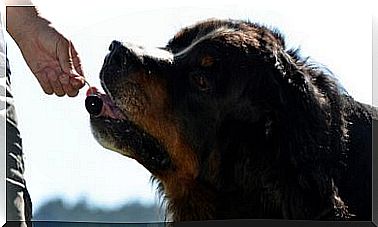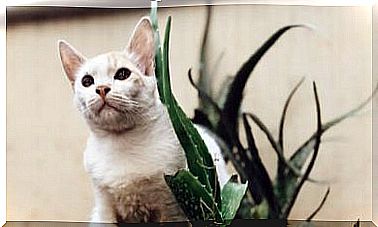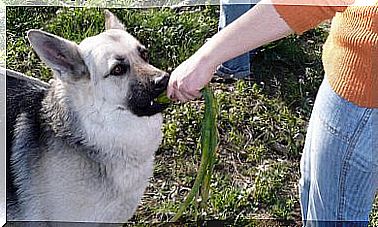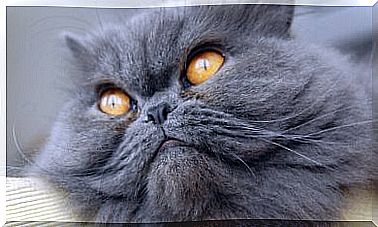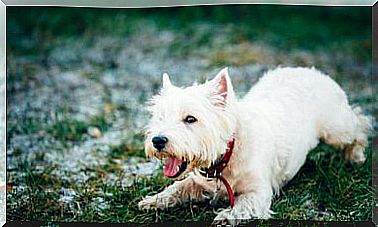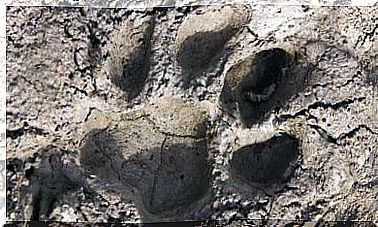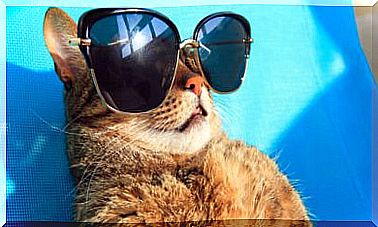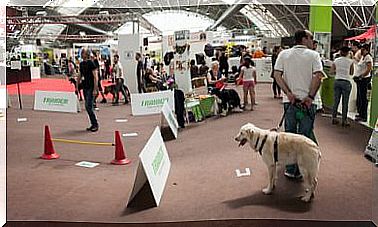Baby Teeth In Cats: 4 Things You Should Know

Puppies are born without teeth and, as they pass their first weeks of life, the primary teeth or better known as baby teeth in cats erupt. This also happens in other species of mammals, like us humans.
It is a completely natural process and you should not worry if during the first months of life you find small teeth on the floor or in the kitten’s bed.
1. How many teeth does a cat have?
To find out the number of teeth an animal has, the dental formula is used, which is a simple way to represent the order, type and number of teeth.
The first dentition of a cat consists of 26 milk teeth, three incisors on each side, two tusks and three premolars on one side and two on the other both on the upper and lower part: 2 (I 3/3 C 1/1 P 3/2) = 26 teeth. These teeth are smaller and sharper than the ones you will have as an adult.
The baby teeth in cats will be replaced by the adult permanent ones: an adult cat has 30 teeth. The cat’s permanent tooth formula is 2 (I 3/3 C 1/1 P 3/2 M1 / 1) = 30 teeth. In the adult cat, the molars, which are the deepest teeth in the mouth, have already appeared, while the first upper molar is the largest.
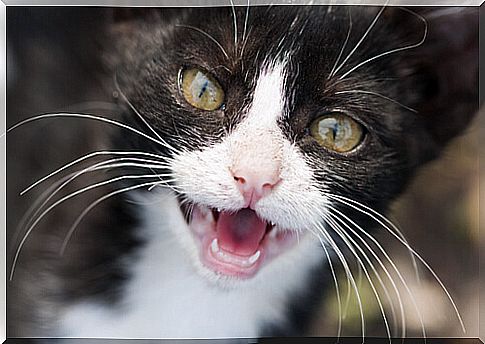
2. The types of teeth
The incisors are 12 in total. They are teeth with short crowns and narrow roots, which are located in the front part of the mouth in a rectilinear way. They appear after three or four weeks and are much smaller than in dogs.
The canines or fangs are large and curved, they are separated from the incisors and both dogs and cats have four. They appear at three weeks of age and are the baby teeth that can take the longest to fall.
Premolars are placed before future molars and in cats, because the maxilla and mandible are shorter, premolars and molars are missing. The first and second premolars and the first and second molars are missing in the mandible, and the first premolar and second molars are missing in the maxillary bone.
3. When do baby teeth start to fall out in cats?
Permanent teeth appear in cats after three months and this process can last up to six months of age.
As adult teeth grow, they push the baby tooth until it falls out. During this time you may notice some discomfort in the kitten and behaviors of the type :
- Increased need to nibble on objects.
- Increased salivation
- Lack of appetite The kitten may not feel like eating for a while due to the pain of growing new teeth.
It is important that during these months you observe your cat’s mouth to check that all the teeth are coming out correctly and, if you see any problems, go to the vet. Sometimes, it may be necessary to remove a tooth, to avoid dental crowding or malocclusion, which favors the accumulation of tartar.

4. Dental hygiene
Although it is more common to see dogs with dental problems, in cats there is also periodontal disease, which can cause tooth loss.
The causes that lead to periodontal disease are the same as in dogs:
- Poor dental hygiene.
- Low quality food. Low-end feeds create a lot of tartar in tooth enamel, which hardens and forms very hard plaques that can be removed with a dental cleaning at the vet.
Tartar buildup tends to be more common in the upper part of the mouth than elsewhere in dogs and cats.
If the tartar is not removed, the affected tooth can fall out, the gum can become infected, and it can even lead to the loss of bone and the supporting structures of the teeth. In very serious cases, the infection can progress and affect other organs. For this reason, it is important to take care of dental hygiene from baby teeth in cats.
